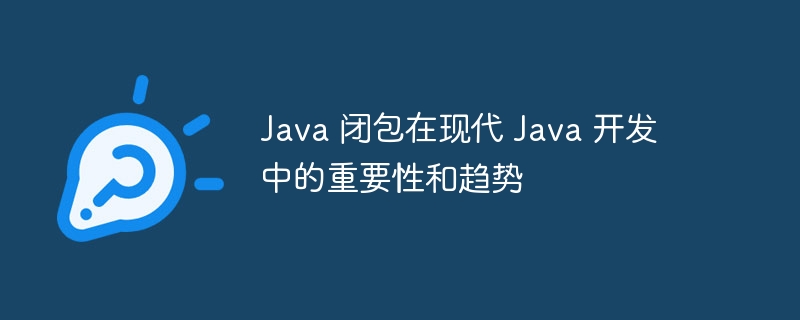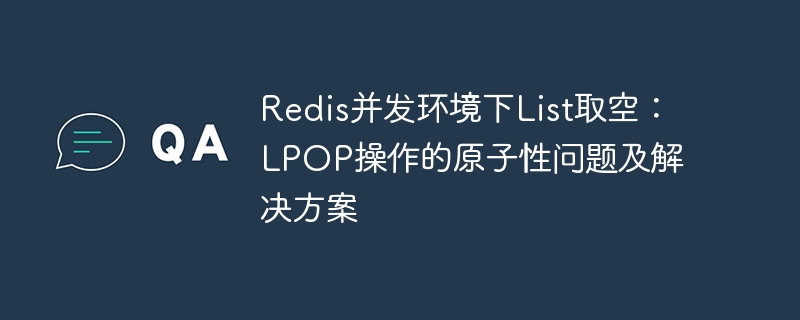一步步教你使用Java连接腾讯云云直播接口实现直播功能
引言:
随着互联网的发展,直播已成为一种越来越受欢迎的媒体形式。许多企业和个人都希望能够通过直播来实现产品的推广、宣传和互动。腾讯云作为国内领先的云服务提供商,提供了稳定可靠的云直播服务,为用户提供了高质量的直播体验。
本文将详细介绍如何使用Java连接腾讯云云直播接口,实现直播功能。我们将按照以下步骤进行操作:
在开始之前,我们需要在腾讯云上创建一个云直播应用,并获取到密钥信息。我们将用到腾讯云提供的SDK来实现直播功能,请确保已经安装了Java开发环境,并将SDK导入你的项目中。
在开始直播之前,我们需要先创建一个直播流。可以使用腾讯云提供的SDK中的接口来创建直播流。具体代码如下:
import com.tencentcloudapi.common.exception.TencentCloudSDKException;
import com.tencentcloudapi.live.v20180801.LiveClient;
import com.tencentcloudapi.live.v20180801.models.CreateLiveStreamRequest;
import com.tencentcloudapi.live.v20180801.models.CreateLiveStreamResponse;
public class CreateLiveStreamExample {
public static void main(String[] args) {
try {
String secretId = "YOUR_SECRET_ID";
String secretKey = "YOUR_SECRET_KEY";
LiveClient client = new LiveClient(secretId, secretKey);
CreateLiveStreamRequest request = new CreateLiveStreamRequest();
request.setAppName("YOUR_APP_NAME");
request.setDomainName("YOUR_DOMAIN_NAME");
request.setStreamName("YOUR_STREAM_NAME");
CreateLiveStreamResponse response = client.CreateLiveStream(request);
System.out.println(response.getRequestId());
System.out.println(response.getStreamId());
} catch (TencentCloudSDKException e) {
e.printStackTrace();
}
}
}在代码中,我们需要将YOUR_SECRET_ID和YOUR_SECRET_KEY替换成你在腾讯云上获取的密钥信息。同时,还需要设置YOUR_APP_NAME、YOUR_DOMAIN_NAME和YOUR_STREAM_NAME为你自己的应用、域名和直播流名称。
创建直播流之后,我们需要获取到推流地址,才能将视频数据推送到腾讯云的直播服务器。可以使用腾讯云提供的SDK中的接口来获取推流地址。具体代码如下:
import com.tencentcloudapi.common.exception.TencentCloudSDKException;
import com.tencentcloudapi.live.v20180801.LiveClient;
import com.tencentcloudapi.live.v20180801.models.CreateLiveStreamPushUrlRequest;
import com.tencentcloudapi.live.v20180801.models.CreateLiveStreamPushUrlResponse;
import java.util.Arrays;
public class GetPushUrlExample {
public static void main(String[] args) {
try {
String secretId = "YOUR_SECRET_ID";
String secretKey = "YOUR_SECRET_KEY";
LiveClient client = new LiveClient(secretId, secretKey);
CreateLiveStreamPushUrlRequest request = new CreateLiveStreamPushUrlRequest();
request.setAppName("YOUR_APP_NAME");
request.setDomainName("YOUR_DOMAIN_NAME");
request.setStreamName("YOUR_STREAM_NAME");
request.setStreamType("NV");
CreateLiveStreamPushUrlResponse response = client.CreateLiveStreamPushUrl(request);
System.out.println(response.getRequestId());
System.out.println(Arrays.toString(response.getPushUrls()));
} catch (TencentCloudSDKException e) {
e.printStackTrace();
}
}
}在代码中,我们同样需要将YOUR_SECRET_ID和YOUR_SECRET_KEY替换成你在腾讯云上获取的密钥信息。同时,需要设置YOUR_APP_NAME、YOUR_DOMAIN_NAME、YOUR_STREAM_NAME和YOUR_STREAM_TYPE为你自己的应用、域名、直播流名称和直播流类型。
获取到推流地址之后,我们就可以通过编写代码来实现直播推流了。可以使用开源的开源的Java媒体服务器(Red5、Ant Media Server等)来实现推流功能。
推流代码示例:
import org.red5.server.api.IConnection;
import org.red5.server.api.IScope;
import org.red5.server.api.Red5;
import org.red5.server.api.stream.IBroadcastStream;
import org.red5.server.messaging.IBroadcastScope;
import org.red5.server.stream.StreamService;
import org.slf4j.Logger;
import org.slf4j.LoggerFactory;
public class StreamPublisher {
private static final Logger logger = LoggerFactory.getLogger(StreamPublisher.class);
public void publish(String streamName, String pushUrl) {
IScope appScope = Red5.getConnectionLocal().getScope();
IBroadcastScope broadcastScope = (IBroadcastScope) appScope.getContext().getBean(StreamService.BROADCAST_SCOPE);
IConnection connection = Red5.getConnectionLocal();
IBroadcastStream broadcastStream = StreamUtils.createBroadcastStream(pushUrl, connection);
broadcastingPipeline.subscribe(broadcastStream);
broadcastScope.publish(streamName, broadcastStream);
logger.info("Stream published: {}", streamName);
}
}在代码中,我们需要将streamName替换成之前创建的直播流名称,将pushUrl替换成之前获取的推流地址。
当推流成功后,我们可以通过拉流来观看直播。可以使用开源的开源的Java播放器(JW Player、Video.js、VLCJ等)来实现拉流功能。
拉流代码示例:
import org.bytedeco.ffmpeg.avcodec.AVPacket;
import org.bytedeco.ffmpeg.avformat.AVFormatContext;
import org.bytedeco.ffmpeg.avformat.AVIOContext;
import org.bytedeco.ffmpeg.avformat.AVInputFormat;
import org.bytedeco.ffmpeg.avformat.AVStream;
import org.bytedeco.ffmpeg.avutil.AVDictionary;
import org.bytedeco.ffmpeg.global.avformat;
import org.bytedeco.ffmpeg.global.avutil;
import java.nio.ByteBuffer;
public class StreamPlayer {
public void play(String pullUrl) {
AVFormatContext formatContext = new AVFormatContext(null);
AVInputFormat inputFormat = avformat.av_find_input_format("flv");
AVDictionary options = new AVDictionary(null);
avutil.av_dict_set(options, "buffer_size", "1024000", 0);
AVIOContext ioContext = new AVIOContext(null);
formatContext.pb(ioContext);
formatContext.probesize(1024 * 1024);
avformat.avformat_open_input(formatContext, pullUrl, inputFormat, options);
avformat.avformat_find_stream_info(formatContext, (AVDictionary)null);
AVStream stream = formatContext.streams(0);
while (avformat.av_read_frame(formatContext, pkt) >= 0) {
AVPacket pkt = new AVPacket();
ByteBuffer data = pkt.data();
// 处理视频数据
}
avformat.avformat_close_input(formatContext);
formatContext.protocols(null);
formatContext.close();
avutil.av_dict_free(options);
}
}在代码中,我们需要将pullUrl替换成之前获取的拉流地址。
当直播结束后,我们需要停止推流和拉流。可以使用腾讯云提供的SDK中的接口来结束直播流。具体代码如下:
import com.tencentcloudapi.common.exception.TencentCloudSDKException;
import com.tencentcloudapi.live.v20180801.LiveClient;
import com.tencentcloudapi.live.v20180801.models.StopLiveRecordRequest;
import com.tencentcloudapi.live.v20180801.models.StopLiveRecordResponse;
public class StopLiveExample {
public static void main(String[] args) {
try {
String secretId = "YOUR_SECRET_ID";
String secretKey = "YOUR_SECRET_KEY";
LiveClient client = new LiveClient(secretId, secretKey);
StopLiveRecordRequest request = new StopLiveRecordRequest();
request.setStreamName("YOUR_STREAM_NAME");
StopLiveRecordResponse response = client.StopLiveRecord(request);
System.out.println(response.getRequestId());
} catch (TencentCloudSDKException e) {
e.printStackTrace();
}
}
}在代码中,我们需要将YOUR_SECRET_ID和YOUR_SECRET_KEY替换成你在腾讯云上获取的密钥信息。同时,还需要设置YOUR_STREAM_NAME为你自己的直播流名称。
总结:
通过以上步骤,我们可以使用Java连接腾讯云云直播接口,实现直播功能。腾讯云提供了强大的云直播服务,为用户提供稳定可靠的直播体验。希望本文能够帮助到开发者们,实现自己的直播功能。如果有任何问题,欢迎留言讨论。





